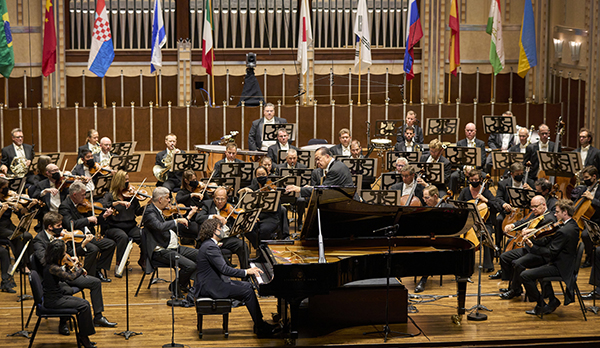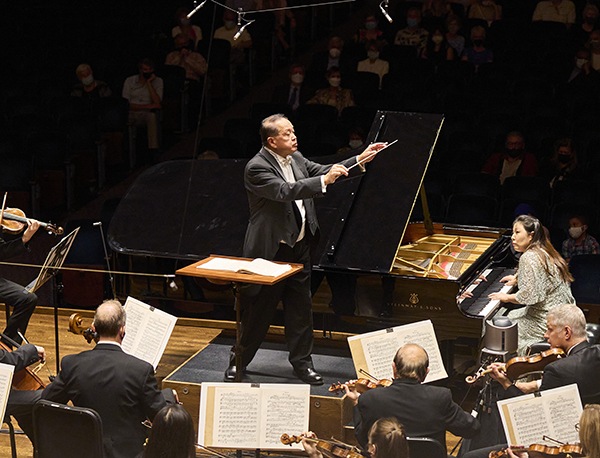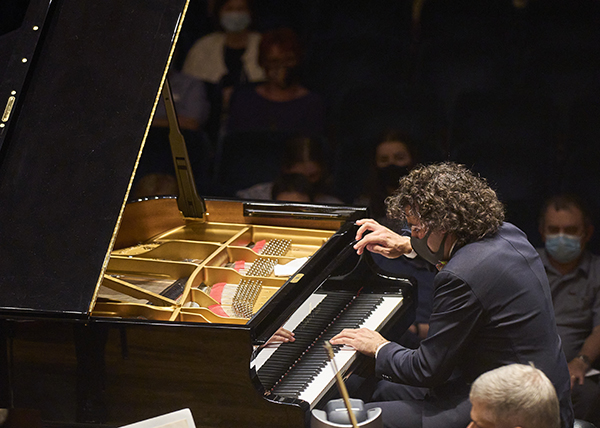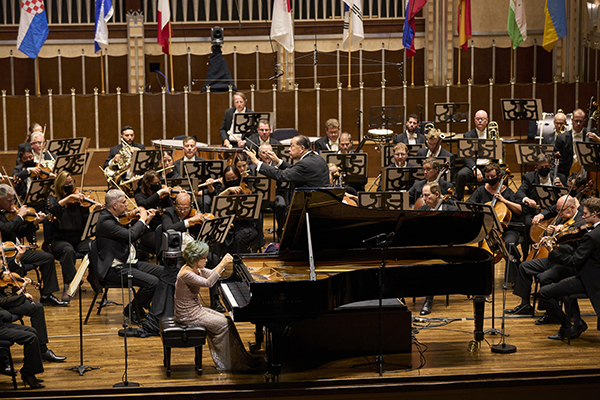by Daniel Hathaway

That must have been an equally memorable experience for the four finalists whose performances in the earlier rounds won them the opportunity to play concertos with Jahja Ling and the Orchestra — a prize in itself.
Byeol Kim (31, from South Korea) led off on Friday evening with Tchaikovsky’s First Concerto, followed by Yedam Kim (32, also from South Korea), who chose Rachmaninoff No. 3. On Saturday, Lovre Marušić (28, from Croatia) reached back into the Classical period with Beethoven No. 4, and Martín García García (24, from Spain) closed out the competition with another Rachmaninoff No. 3.
All four performances were impressive, especially considering that each soloist had only 65 minutes to work with the Orchestra — just enough time for a run-through and some touch-ups. That’s a real-life situation, by the way. For standard repertoire, touring virtuosos don’t get much more time with their collaborators before a concert.

Wearing a face mask — as did a number of players in the Orchestra — García García added a good measure of Iberian flair to the Rachmaninoff without diminishing its Russian soul. His highly nuanced playing inspired Ling and the Orchestra to a wonderful transparency that brought hidden details to the foreground, yet preserved the composer’s sonic richness and complexity.

As it turned out, García García had plenty of mesmerizing energy left to persuade the Orchestra to join him in an over-the-top reprise of that splendid melodic sequence that heralds the end of the third movement. The whole performance was breathtaking, and brought the cheering audience to its feet.
Marušić won a similar ovation for a much different piece in the first Saturday evening slot. His reading of Beethoven’s Fourth Concerto was pristine — cool and perfectly proportioned, but bubbling with subterranean energy.

The second-movement dialogue turns more contentious, but the soloist calmly resisted the temptation to raise his voice in response to the angry utterances of the strings. Collegiality reigned in the third-movement rondo, and Ling, Marušić, and the Orchestra brought a splendid clarity to what often turns into a Beethovenian free-for-all in the coda.
If the Concerto Round ended in a burst of energy on Saturday, it began on Friday evening with a curiously phlegmatic performance of Tchaikovsky No. 1. Under tempo and episodic, the piece never really ignited until late in the third movement, after which the audience acknowledged Byeol Kim’s performance with a rousing ovation.
Earlier, although Kim displayed dazzling virtuosity in her solo passages, she passed up too many opportunities to connect with her onstage colleagues. The results were puzzling, and you had to wonder if the Orchestra was still finding its groove after its long, COVID-imposed sabbatical. It was a relief to hear the ensemble sounding like its old self again in the Rachmaninoff that followed intermission.
Photos by Roger Mastroianni courtesy of The Cleveland Orchestra.
Published on ClevelandClassical.com August 11, 2021.
Click here for a printable copy of this article




